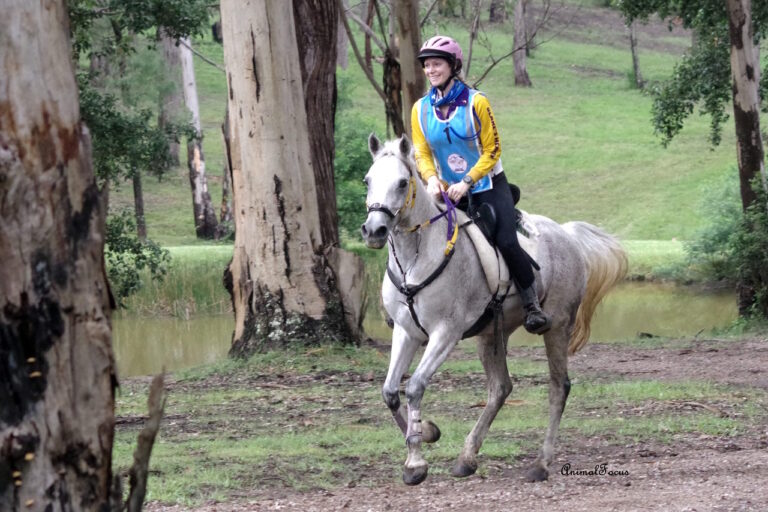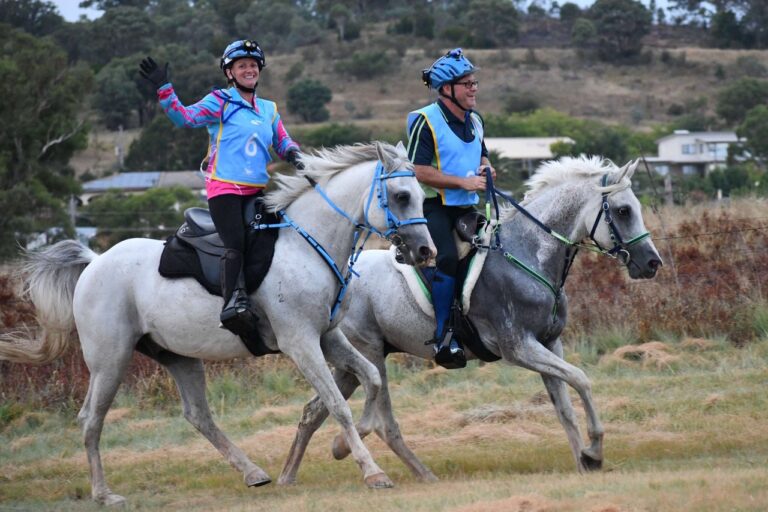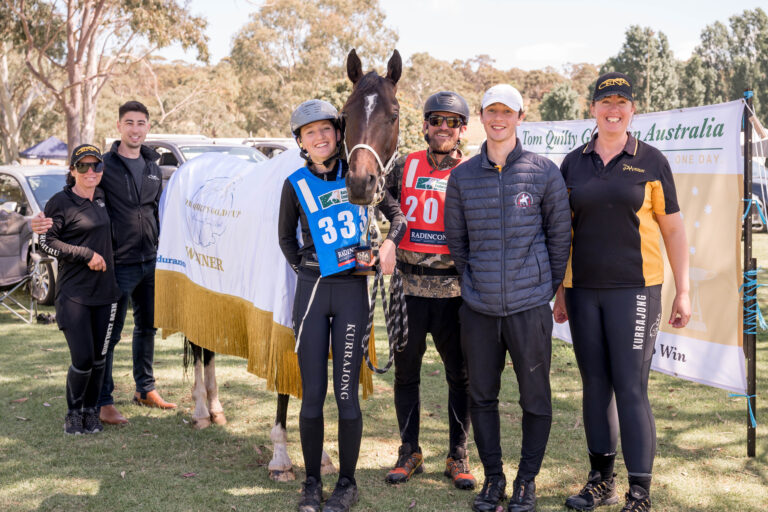The Endurance Essentials Guide
with Bec Bramich for Equestrian Life
If you are new to endurance or planning to go to your first competition here are a few key things which I think you shouldn’t go without!
Firstly the most important thing is the comfort of you and your horse.
Sheepskin Items
A well fitting saddle and nice wooly saddle pad help your horse deal with the miles with ease. A great brand that I personally love are the “Archer” saddle pads. They have an extended style with pockets, which are great for storing carrots for your horse, muesli bars, your mobile phone or a drink bottle!
A saddlecloth with pockets is a great place to store carrots!
It can also be a good idea to put a lovely sheepskin girth sleeve on your girth as a thin skinned horse can easily end in a vet out if they show rubs.
Baby Powder
A lot of riders swear by Curash Baby Powder for them as well as their horse! You can sprinkle some under the girth or between your horses boots, as an aid for rubs.
Tack
Properly fitting tack for your horse is a must. A lot of endurance riders use biothane tack as it is lightweight and easy to keep clean. Keeping tack clean is extremely important as dirty tack can cause nasty rubs. I like to use a bridle such as the “Zilco Deluxe Bridle” because it doubles up as a halter which is handy for quick strapping. And I find it easier to ride with rope reins as I like that they can double up as a lead rope.

Boots – Horse
It is a personal choice whether to use splint/tendon boots. Some riders believe it heats the horses legs too much, others believe it prevents injuries from debris on the ground, falls and your horse knocking themselves if they start feeling tired. If you choose to use boots, they must fit properly and be clean. Every leg should be checked regularly for things that may have gotten caught in them. And remember, you can’t vet your horse through with boots, so they must be taken off for vetting. It is also handy to carry a hoof boot while you are riding in case your horse pulls a shoe, there are lots of many great brands out there, you just have to see what fits your horse best, my personal preference is one called the “Renegade”. After the ride it’s important to take care of your horses legs, by either ice boots or poultice such as “Tuff Rock” or “Swell Down”.
Boots – People
Rider comfort is of course important too, the better you feel and ride, the better the horse will cope! I like to ride in “Dublin Intensity Boots” and gaiters as they are extremely comfortable and totally waterproof. My second option is runners and a suede chap, I wear runners on a leg which I know I’ll be getting off and walking/running beside my horse a lot! Bear in mind though that runners are only allowed if have caged stirrups.

Clothing
In terms of pants I love the Irideon tights but its really up to what ever you feel comfortable in. Seamless options are good as there is less chance for rubs. A lightweight, breathable helmet is also needed as it’s on your head for long periods of time! Another great item is a helmet torch, which will be essential if you know you will be starting in the dark (usually this is the 80km + riders).

Technology
Another item that is not essential but is very handy is a GPS watch. One brand that I really love and have always found reliable is the Garmin 910 XT, it tells me the time I have been riding, the distance and speed – all very important things to keep track of! To vet your horse through you must have a heart rate monitor or stethoscope, one of the most popular brands in Endaurance is Polar.

Strapping
Strapping is caring for your horse after a long sweaty ride, such as cooling the neck and back when the horse is hot to help with lowering the heart rate. Buckets and sponges are needed as you will need to “strap” your horse before vetting and to give them a quick clean up. I find it best to avoid the rump as it can easily stiffen if gets too cold. In winter you may not need to strap with water if it is a chilly day, a woolen rug over the bum would be a better option and keeping the horse moving so it doesn’t stiffen up and get cold is advised.
Feeding
Feeding your horse at a ride can be tricky if they are a bit hyped up. Plenty of carrots and apples are handy to have and I like to bring water from home as you have more chance of them drinking. To my own horse I offer molasses water and plain water, and remember it’s better if it has the chill taken out of it.
Items Not Allowed
Spurs and crops.
Final Thoughts
The most important thing to remember is to keep you and your horse comfortable. You should ride in the tack you are planning to use and the clothing you are planning to wear in training so that any rubs or discomfort are sorted before the event! If you vet out, make sure you fully understand why. Most vets and officials are very friendly and will try to explain it to you anyway. The common goal for riders and vets is horse welfare – not exclusion for competition’s sake. Try to regard the vet out constructively as how to improve for next time, and don’t get too discouraged.






